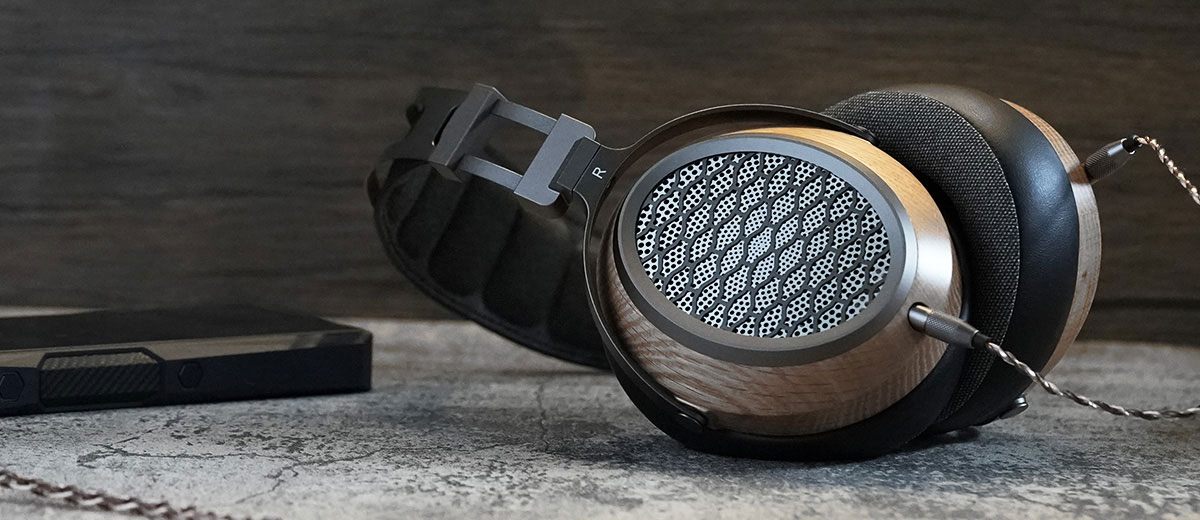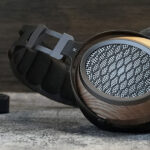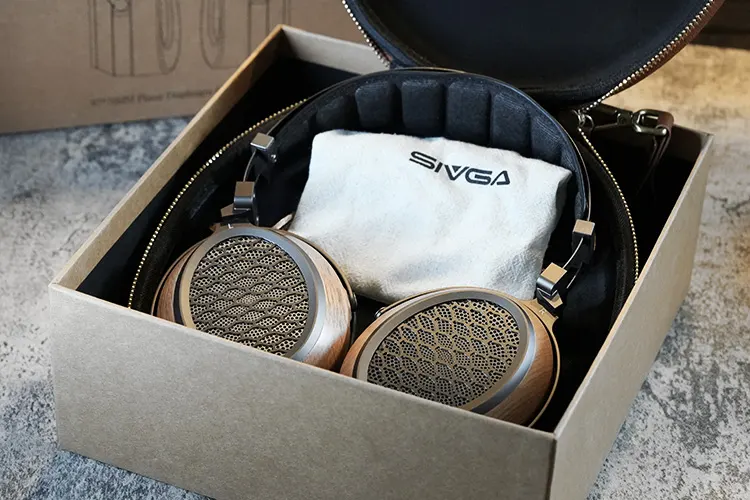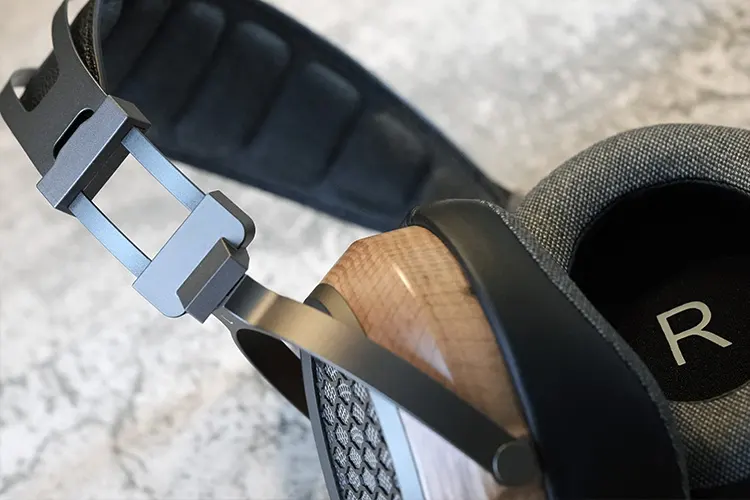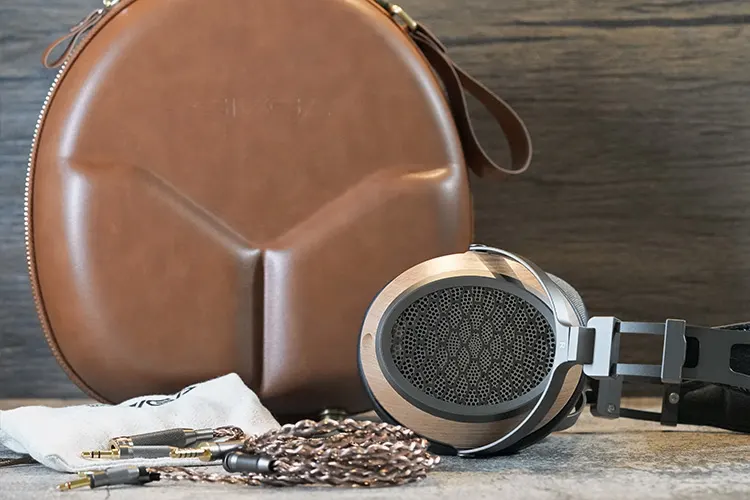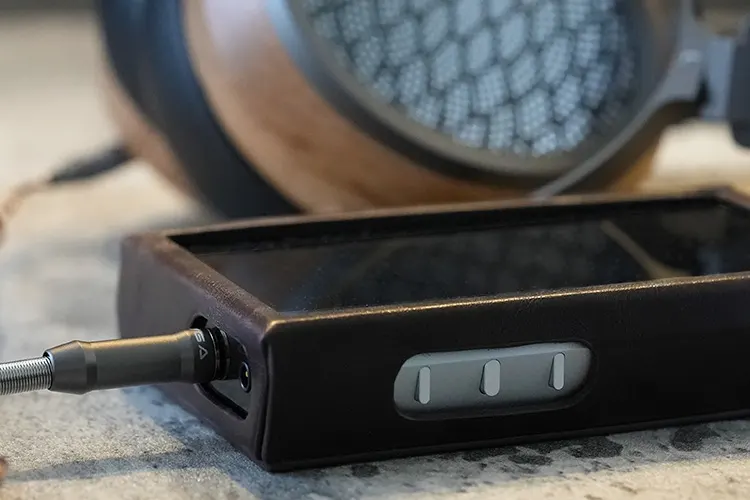Today, James reviews the SIVGA P2 Pro, which is a pair of solid-wood housing semi-open planar magnetic driver headphones priced at $449.
Disclaimer: This sample was sent to me in exchange for my honest opinion. Headfonics is an independent website with no affiliate links or status. I thank SIVGA for their support.
Click here to learn more about SIVGA products previously reviewed on Headfonics.
Note, that this article follows our latest scoring guidelines which you can read in more detail here.
The $449 P2 Pro is SIVGA’s latest set of open-back planer driver headphones with an attractive wooden cup and metallic grill design. It sits slightly above the company’s dynamic driver models such as the Luan and the SV023.
The P2 Pro’s legacy is derived from the previous P-II. However, this time they are taking the original P-II model’s driver to the next level by introducing a new diaphragm with an intriguing Sapphire Vibration Circuit.
These headphones do not sound like what you would typically expect from a Planar driver, though they still retain the driver’s strong detail retrieval power.
The P2 Pro is also quite sensitive so it works well with portable sources such as DAPs. You can learn more about its full performance and how it stacks up against some of the competition in detail in my review below.
Features
The SIVGA P2 Pro is a pair of open-back (more semi-open) planar magnetic driver headphones. It is rated at 32Ω with an SPL of 98 dB/mW ±3 dB so relatively easy to drive from a wide range of sources.
The driver measures 97 x 76mm (though the active area may be smaller) with an ultra-nanometer diaphragm combined with an aluminum coil. The P2 Pro uses a dual-sided magnetic array and plenty of ‘holes’ (108) for acoustic venting and airflow management.
One of the more surprising aspects of the P2 Pro driver design is the blending of Sapphire with aluminum for the coil part of the driver.
SIVGA explained that this achievement is accomplished using a deep ultraviolet lithography mechanism and a 28nm manufacturing process to improve consistency and enhance technical performance. Something that we will assess if true in our sound impressions.
Design
I don’t think the official photos are doing this pair of headphones justice as they look more appealing, especially for the wooden part, which feels very dense and smoothly polished. The wooden part is made from Red Oak, which is likely tooled by CNC and then polished by hand.
I like how they crowned the cups with aluminum parts so it will be a bit harder to scratch the wood accidently. The metallic grills on top have a fine oxidized matte gunmetal finish that is very smooth to the touch and offers a nice contrast to the design together with the stainless steel grills underneath.
As for the headband, it relies on a friction lock and you can very easily adjust it. The part that touches the head uses real sheepskin which makes it feel more durable and premium.
The metallic parts are also commendable with a solid build yet lightweight with smoothly articulating hinges.
Overall, the P2 PRO maintains a very portable profile and it doesn’t look like a generic design with its firm outlines and artistic grills.
Comfort & Isolation
Before the P2 Pro came to me I was intrigued about whether the pad design could block out noise effectively since it is sloped on the upper side.
In practice, it does shield out some noise but since the design is semi-open you will still hear ambient background noise.
Despite this, there is sufficient bass power even when the P2 Pro doesn’t clamp hard on the head. The pad’s foam feels quite soft though it has enough strength to stay in shape and allow a longer distance from the driver membranes to the ears.
The P2 Pro is light so it doesn’t exert much pressure around the ear with tilted earpads that are also glasses-friendly.
Overall, the fit is great, and feels very comfortable. There is no need to hunt for a sweet spot on your head to get them into a comfortable position. You just put them on and they fit immediately.
Stock Cable
The P2 Pro comes with an imported, 6N OCC cable which looks more attractive than common black-colored stock cables.
It is terminated in 4.4mm plugs and comes with a converter to 3.5mm. All metallic parts are customized, and the 4.4mm plug has a protective strain relief which helps further enhance the strength.
I recommend burning in the headphones with the stock cable for at least a week and you will hear better dynamics with the presentation sounding more natural.
Packaging & Accessories
The P2 Pro comes in a rather plain box but upon opening it, there is a gentle surprise as there is a leather carry case similar to the one that comes with the FiiO FT5.
Inside the case, you will find a small fabric pouch with the connector for changing 4.4mm to 3.5mm and a 6.3mm to 3.5mm convertor. The leather case is thin and portable so you can easily slide it into a backpack.
Sound Impressions
For the following sound impressions, I paired the P2 Pro with various DAPs such as the Shanling M5 ULTRA and the FiiO M23, and desktop amplifiers such as the RME ADI-2 Pro and the FiiO K19 for my impressions below.
Summary
While possessing the accurate traits of planar driver performances, the SIVGA P2 Pro has an M-shaped tuning that highlights the bass. It works well with trending pop and electronic music, resulting in impactful and detailed sound without any sharpness.
With an impedance of 32Ωand a sensitivity of 98 dB/mW, it can sound quite dynamic and resolving when paired with powerful DAPs. With desktop amplifiers it will get even more dynamic and euphonic, sounding much fuller and firmer in the bass.
The SIVGA P2 Pro was given more than 100 hours of burn-in, and to my ears, it is becoming slightly more dynamic and darker in the background.
Bass
The P2 Pro exhibits plenty of bass energy with elevated lows, resulting in a stronger presence and fullness. It delivers an airy and punchy signature with elaborated decay, which is often associated with wooden housings, giving it a dynamic headphone-like feel.
However, the distinct density and precision characteristic of planar drivers are still noticeable, and the bass also shows good density, sounding well-controlled, avoiding it to bleed into the midrange.
The mid-lows are presented smoothly with a dense character even when driven by my Shanling M5 ULTRA. While it may not have the same attack and recovery speed as other planar headphones I’ve heard, it maintains good clarity without feeling thick or muddled.
The control is adequate, and the sound is soothing, making it particularly suitable for genres like EDM, R&B, and dance music.
Compared to some other planar headphones that may sound overly clean and precise, the P2 Pro adds a touch of coloration that helps the bass stand out more and sound livelier.
Mids
The midrange frequencies on the P2 Pro are rendered neutrally, while the upper vocal frequencies aren’t intensive. The vocal imaging is very well separated and positioned not too forward.
This characteristic helps present vocals in a well-defined manner and with a hint of warmth that strengthens the vocal body. It also remains dynamic and spike-free when pushing to higher volume.
Due to the energy from the mid-bass region, the P2 Pro provides a boost to the fundamental vocal frequencies. As a result, vocals, particularly darker voices, have plenty of body and presence.
This tuning is beneficial when paired with less powerful sources, as it allows for a well-structured, layered, and natural vocal delivery. A commendable trait for a planar technology-based headphone.
Treble
The P2 Pro maintains a clear yet controlled and rounded treble tuning. As the tuning stresses the lows and the upper vocal range for clarity and dynamics, the higher frequencies are rather smoothly presented with a gentle roll-off.
This retains adequate air and harmonics of string and woodwind instruments so you can still hear the nuances in the recording.
With sharper voices, the P2 Pro demonstrates strong penetration power but a little bit of sibilance, which may necessitate sources with better control and definition in the treble range. However, I would still consider it very controlled with its rounded tuning.
In general, vocals have sufficient power to cut through mixes and maintain a sufficient degree of separation from the backing instruments. The treble is not overpowering when the midrange is relatively less intensive, allowing for a nicely articulated and natural presentation.
Staging
The P2 Pro’s elaborated bass and the slightly less forward placement of vocals contribute to a stronger sense of expansiveness on the soundstage. The elevated bass response also enhances the perception of height and depth.
While the soundstage may not feel very wide on the x-axis, the separation and definition of drum elements are easily discernible, resulting in a satisfactory overall level of detail.
I prefer the mids to be slightly more intensive to achieve a better balance and allow vocals and other acoustic instruments to fill up the rendered space.
However, when listening outdoors in a coffee shop, the current balance compensates well for the ambient noise. The semi-opened design also allows some ambient noise to blend in, resulting in an overall dynamic sound without unwanted spikes for pop and rock music.
However, I would still like the vocals to be slightly more forward and the top end to be more exciting when listening to jazz and classical music.
Click on page 2 for my recommended pairings and selected comparisons.

